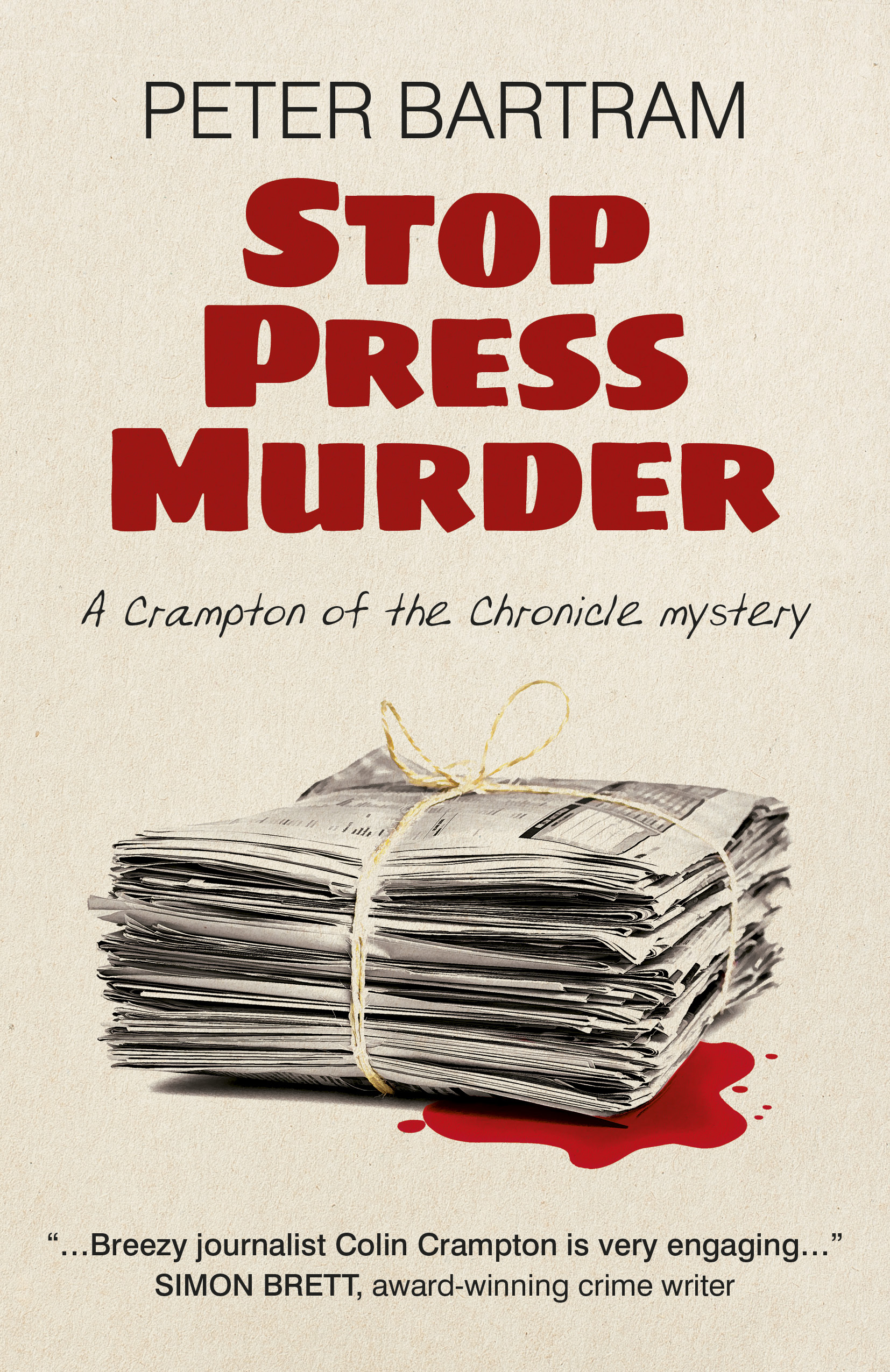Today I have a guest post by crime author Peter Bartram.
 Peter began his career as a local reporter before working as a journalist in Fleet Street and finally becoming freelance. He’s pursued stories in locations as diverse as 700-feet down a coal mine and a courtier’s chambers at Buckingham Palace. His novels are fast-paced and humorous – the action is matched by the laughs.
Peter began his career as a local reporter before working as a journalist in Fleet Street and finally becoming freelance. He’s pursued stories in locations as diverse as 700-feet down a coal mine and a courtier’s chambers at Buckingham Palace. His novels are fast-paced and humorous – the action is matched by the laughs.
Over to you Peter.
WHERE I GET MY IDEAS FROM
Shortly after I joined my first newspaper as a reporter, the news editor sent me out on a strange assignment. “We’ve just had a call from this bloke who claims his relatives are stealing his stuff – and the police don’t want to know. Go and see whether there’s a story in it.”
The bloke turned out to be a thin shambling character, about seventy, wearing old stained clothing and with a shaving cut on his chin. He lived in a large Edwardian house with big rooms and high ceilings.
He showed me into one of the rooms. I could hardly get through the door. The place was stacked almost to the ceiling with old clothes. There must have been tonnes of garments in there. The heavy musty smell of damp fabrics made it difficult to breathe.
I asked the bloke how the clothes came to be there. He told me that his nephew was putting there but also stealing other things from around the house when he did so. I asked him what sort of things. But he seemed too confused to answer. Back in the 1960s, we didn’t know as much about dementia as we do today. Often, the condition wasn’t recognised – even by medical professionals.
Looking back, I think the old bloke may have been in the early stages of Alzheimer’s. But that didn’t explain why a large room was stacked with more clothes than he could possibly have owned in a lifetime. I never got to the bottom of the puzzle – and the paper never published a story.
But when I started writing my Crampton of the Chronicle series of crime mysteries, it was one of many incidents from my career as a journalist that came flooding back. I’ve used lots of them in my books and short stories. I turned the incident I’ve just described, complete with fictional solution, into a short story – The Mystery of the African Charity – which you’ll find in Murder from the Newsdesk, a free e-book you can download for your kindle.
Other incidents inspired action in Headline Murder, the first of my full-length Crampton novels, and in the second, Stop Press Murder. I’m certainly not the first author to use his own experiences as the raw material for storytelling. It is a truism to say that fact is stranger than fiction – and as long as that is true, real-life will continue to be a source of inspiration for many authors.
But although my own career provides incidents, characters and atmosphere that I can draw on, it doesn’t produce what I might call the “big idea” which underlies each murder mystery. As I see it, the big idea is a central puzzle which the protagonist – in my case, Colin Crampton – has to figure out in order to crack the mystery.
And how do I get those big ideas? Generally, I find, they come from sitting down – or, preferably, lounging in a hot bath – thinking hard and asking “what if?” questions. For example, what if an honest man overheard two hardened criminals planning the perfect crime, but decided to commit it himself before they did? The answer to that question could be turned into a satisfying murder mystery. (Perhaps I’ll write it one day.)
Of course, an idea like that provides no more than the bare bones – and it’s the hard work of plot development which puts the flesh on the bones. But that, as they say, is another story.
Stop Press Murder: a Crampton of the Chronicle Mystery
 FIRST, the saucy film of a nude woman bathing is stolen from a What the Butler Saw machine on Brighton s Palace Pier. NEXT, the pier s night-watchman is murdered – his body found in the coconut shy. COLIN CRAMPTON, ace reporter on the Evening Chronicle, senses a scoop when he s the only journalist to discover a link between the two crimes. HE UNCOVERS a 50-year feud between twin sisters – one a screen siren from the days of silent movies, the other the haughty wife of an aristocrat. BUT COLIN S investigation spirals out of control – as he RISKS HIS LIFE to land the biggest story of his career. STOP PRESS MURDER, a Swinging Sixties mystery, has more twists and turns than a country lane. It will keep you guessing – and laughing – right to the last page.”
FIRST, the saucy film of a nude woman bathing is stolen from a What the Butler Saw machine on Brighton s Palace Pier. NEXT, the pier s night-watchman is murdered – his body found in the coconut shy. COLIN CRAMPTON, ace reporter on the Evening Chronicle, senses a scoop when he s the only journalist to discover a link between the two crimes. HE UNCOVERS a 50-year feud between twin sisters – one a screen siren from the days of silent movies, the other the haughty wife of an aristocrat. BUT COLIN S investigation spirals out of control – as he RISKS HIS LIFE to land the biggest story of his career. STOP PRESS MURDER, a Swinging Sixties mystery, has more twists and turns than a country lane. It will keep you guessing – and laughing – right to the last page.”
There is a free Crampton taster novella – Murder in Capital Letters – available to download at colincrampton.com
You can find Peter on his website | Facebook | Amazon



I think you should write that story one day.
I can only imagine the strange things you’ve seen over the years as a reporter.